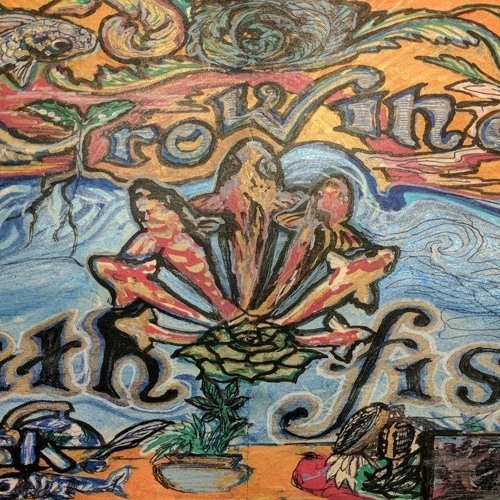X15
Well-known member
Hey @Thighland got a room I can rent? Lol
You are so very right about the rules in the us.
You are so very right about the rules in the us.
A worm farmer I know of has a hydroponic lettuce grow. He has a small coy fish tank that overflows into the lettuce water. That is the fertilizer. When I feed outside plants with pond water they do well. Probably too much N for flower though.The reality is it's a viable model without the sanitary/health issues you're thinking of. I've read several studies the last few months on the feasibility of raising Animals/Fish/Plants in this type of cycle and it's excellent. Multiple countries now have studies on projects which are showing similar benefits.
The best manure so far is rabbit, due to the water quality and clarity increases combined with the nutrient density and health of the fish. Yes, the rabbit manure makes the water cleaner and clearer while also being free of human pathogens.
Too much N is something I'm a little concerned about. It's not high, less than 80ppm, but the K is too low for it to be a balanced fertilizer for flowering, which is why I'm making compost and castings from banana skins.A worm farmer I know of has a hydroponic lettuce grow. He has a small coy fish tank that overflows into the lettuce water. That is the fertilizer. When I feed outside plants with pond water they do well. Probably too much N for flower though.
Do you have a link to the podcast? Sounds very interesting.Hey @Thighland Potent Ponics has an episode in which they discuss fermentation of banana peels in drums. I’m forgetting the name of the guest he had on but it was really interesting and they spoke of crazy high levels of K in what was the final product. I’d check it out.
Are you worried you’re accumulating too much N in the ground with the ppm in h2o? Or does it seem like the plant is taking up a good amount after every application?
Looks great!


A while back there was a lot of interest in aquaponics for cannabis, but the aquaponic sub forum here is very quiet. I've wondered whether this is because AP is tricky and the water too high in N, but lacking K.
I have an AP system and use the water everywhere, it's full of microorganisms. The filters fill with fine solids, plus N and to a lesser extent P. The filter water is black, I drain it straight to my garden beds, which have plenty of biochar. Sometimes I also add EM, kelp extract and molasses, then add an air stone and let it bubble for a few hours. For this you need to turn off the pump, so tough fish are required.
Catfish seems indestructible, they can go weeks without food or a water change. Despite my best efforts I'm yet to kill one. Tilapia aren't nearly as tough, I've managed to kill plenty.
The fish can be fed soldier fly larvae, duckweed or moss, which can be easily grown. Soldier flys live on food scraps and you also get castings.
If I was to move house I wouldn't bother with an AP system, too much work and too much space required. Instead I'd do something similar to the highly technical drawing below.
I'd like to hear others thoughts and any ideas ppl may have.
View attachment 18772450
i almost got a divorce because of that shit. i had a container with the alaska fert in it with a lid on in a hot room with the plants. i had forgotten about it and when i opened it the smell was beyond description.I use Alaska fish fertilizer 5-1-1 and approve using fish water for plants.
Thanks for the input, there's a lot of good info in your post.howdy ya'll!
one of my uncles in the mississippi delta was a large scale catfish farmer. he had 32 18 acre ponds. i worked for him a couple of summers when i was about 13. so I learned some basic fish keeping there.
at the age of 25 i moved to key west and began a career diving for live marine specimens for zoos and aquariums. after five years there i moved to puerto rico and worked there another 15 years shipping live marine animals. i designed and built all my holding facilities.
although i have never built and operated an aquaponic system i have studied it with interest for years because i grow weed and have always dreamed of a self-sustaining system.
one of the first problems you will encounter is that nitrogen in excess is toxic to fish.
fish waste is converted from ammonia to nitrite by bacteria. and then converted to nitrate also by bacteria.
both the ammonium form and the nitrite form are very toxic in a closed system and bacterial conversion to the nitrate form is critically monitored.
depending on species, nitrate at low levels is not toxic but becomes so as the level ramps up.
how this applies to growing plants depends on which plants you are growing.
vegetative low light crops can be grown using the fish water recirculated as the plants help keep the solution from becoming toxic.
the complexity begins ramping up when you try to raise a high-light flowering plant.
this is because the plant's nitrogen needs are at a level that is almost immediately toxic to most fish species.
because the cannabis plant has high nitrogen needs and the fish have low needs you will not be able to grow a quality cannabis plant using only the fish water applied directly.
the solution to this disparity is to use a concentration tank.
you evaporate the fish solution until you get the desired nitrate level.
but lately, about a year now, i've been incorporating worm castings into a recirculating hydro system.
i like what i'm seeing.
also, @Douglas.Curtis has mentioned the use of rabbit pellets. an excellent source of cold manure.
so, i see the use of fish waste growing cannabis as a viable component of your mixed source feed if you use it straight but not as the primary feed unless you concentrate it.
it would be an expensive source of fertilizer unless you really want to raise food fish for personal consumption, which i do.
if you are already raising fish then why not?
And low fish stock. There are two filters with netting to trap solids and house bacteria, plus the grow beds where more bacteria and worms live. All this is constantly circulating and splashing for oxygenation, the GH is a nice place to be in the mornings.sounds like you have effective biological filters.
An overdue thanks for posting. I've only just got around to listening to this, it's brilliant. I had to turn it off half way through as I was cooking and couldn't concentrate, there is just too much information. It will take several listens to take it all in. The guy is doing aquaponics in Vietnam and creating his own organic nutes. He gets a huge amount of K from banana trunks. AP is low in K, so this an important step to truly organic hydroponics.View attachment 18780513
Growing With Fishes 251 Quoc Khanh Pham Talking KNF In Vietnam
Growing With Fishes Podcast. A podcast dedicated to growing aquaponic & cannabis and spreading information to the masses about sustainable cannabis and veggie production! Stoney Scholar Family Reliefsoundcloud.app.goo.gl
I believe that’s it @Thighland
From the pic you posted things look good to me. Your idea of wanting to balance the N is a good plan. But as she gets older she will take what she wants as long as it’s there.
Laws are like women. Pick one or even a few that you like. But leave the rest for somebody else to worry about.Yeah where I use to live in CA collecting rain water was against the law. Pretty crazy shit.